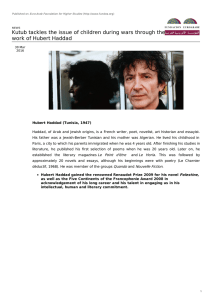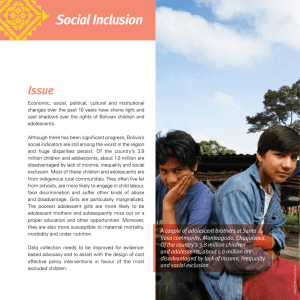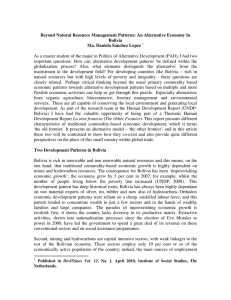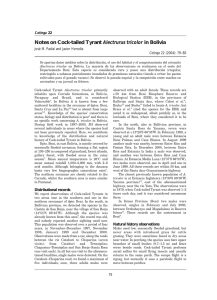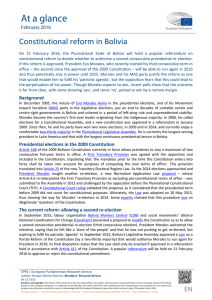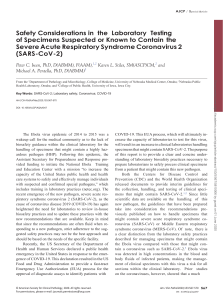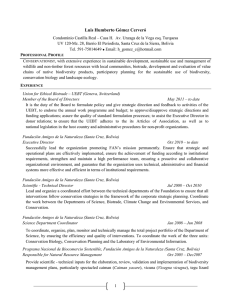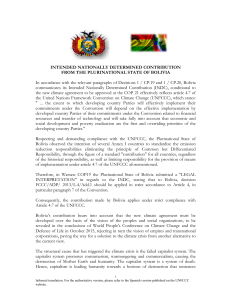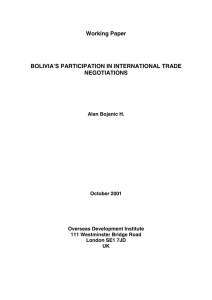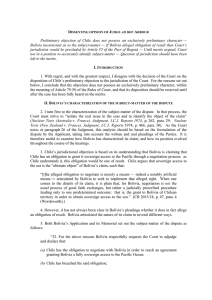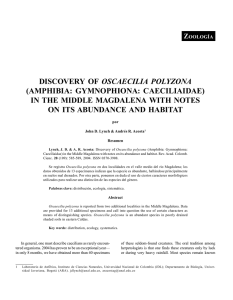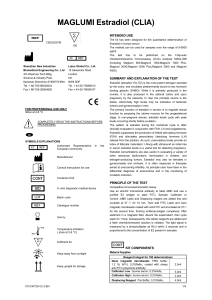New Species of Hydrolaetare (Anura
Anuncio
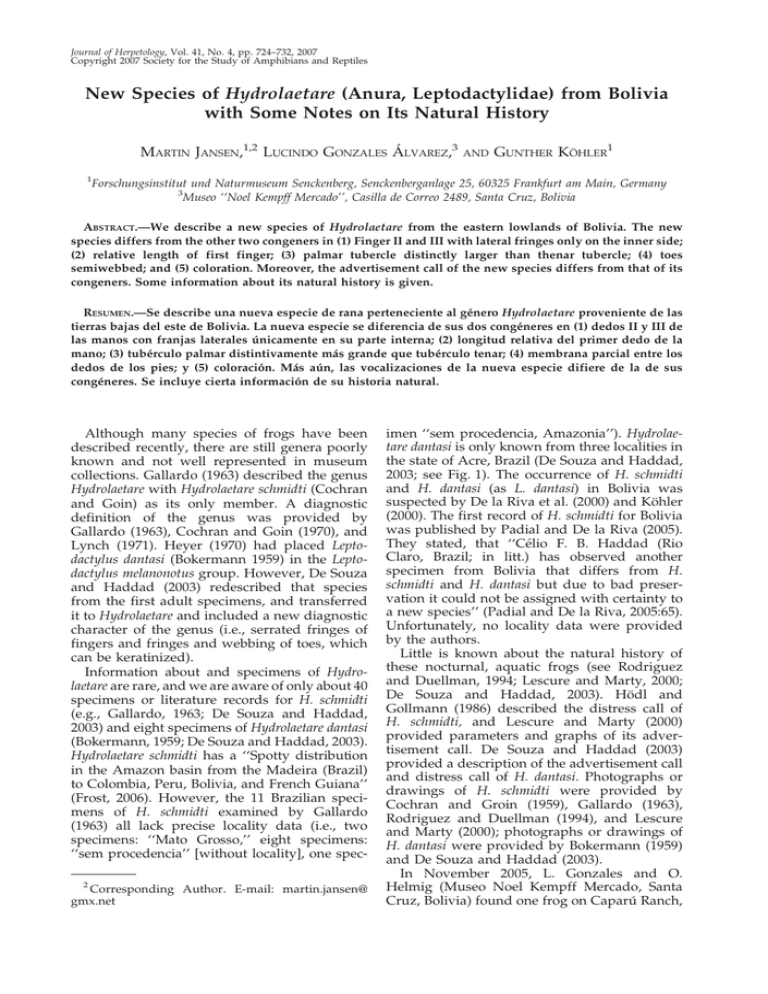
Journal of Herpetology, Vol. 41, No. 4, pp. 724–732, 2007 Copyright 2007 Society for the Study of Amphibians and Reptiles New Species of Hydrolaetare (Anura, Leptodactylidae) from Bolivia with Some Notes on Its Natural History MARTIN JANSEN,1,2 LUCINDO GONZALES ÁLVAREZ,3 1 AND GUNTHER KÖHLER1 Forschungsinstitut und Naturmuseum Senckenberg, Senckenberganlage 25, 60325 Frankfurt am Main, Germany 3 Museo ‘‘Noel Kempff Mercado’’, Casilla de Correo 2489, Santa Cruz, Bolivia ABSTRACT.—We describe a new species of Hydrolaetare from the eastern lowlands of Bolivia. The new species differs from the other two congeners in (1) Finger II and III with lateral fringes only on the inner side; (2) relative length of first finger; (3) palmar tubercle distinctly larger than thenar tubercle; (4) toes semiwebbed; and (5) coloration. Moreover, the advertisement call of the new species differs from that of its congeners. Some information about its natural history is given. RESUMEN.—Se describe una nueva especie de rana perteneciente al género Hydrolaetare proveniente de las tierras bajas del este de Bolivia. La nueva especie se diferencia de sus dos congéneres en (1) dedos II y III de las manos con franjas laterales únicamente en su parte interna; (2) longitud relativa del primer dedo de la mano; (3) tubérculo palmar distintivamente más grande que tubérculo tenar; (4) membrana parcial entre los dedos de los pies; y (5) coloración. Más aún, las vocalizaciones de la nueva especie difiere de la de sus congéneres. Se incluye cierta información de su historia natural. Although many species of frogs have been described recently, there are still genera poorly known and not well represented in museum collections. Gallardo (1963) described the genus Hydrolaetare with Hydrolaetare schmidti (Cochran and Goin) as its only member. A diagnostic definition of the genus was provided by Gallardo (1963), Cochran and Goin (1970), and Lynch (1971). Heyer (1970) had placed Leptodactylus dantasi (Bokermann 1959) in the Leptodactylus melanonotus group. However, De Souza and Haddad (2003) redescribed that species from the first adult specimens, and transferred it to Hydrolaetare and included a new diagnostic character of the genus (i.e., serrated fringes of fingers and fringes and webbing of toes, which can be keratinized). Information about and specimens of Hydrolaetare are rare, and we are aware of only about 40 specimens or literature records for H. schmidti (e.g., Gallardo, 1963; De Souza and Haddad, 2003) and eight specimens of Hydrolaetare dantasi (Bokermann, 1959; De Souza and Haddad, 2003). Hydrolaetare schmidti has a ‘‘Spotty distribution in the Amazon basin from the Madeira (Brazil) to Colombia, Peru, Bolivia, and French Guiana’’ (Frost, 2006). However, the 11 Brazilian specimens of H. schmidti examined by Gallardo (1963) all lack precise locality data (i.e., two specimens: ‘‘Mato Grosso,’’ eight specimens: ‘‘sem procedencia’’ [without locality], one spec2 Corresponding Author. E-mail: martin.jansen@ gmx.net imen ‘‘sem procedencia, Amazonia’’). Hydrolaetare dantasi is only known from three localities in the state of Acre, Brazil (De Souza and Haddad, 2003; see Fig. 1). The occurrence of H. schmidti and H. dantasi (as L. dantasi) in Bolivia was suspected by De la Riva et al. (2000) and Köhler (2000). The first record of H. schmidti for Bolivia was published by Padial and De la Riva (2005). They stated, that ‘‘Célio F. B. Haddad (Rio Claro, Brazil; in litt.) has observed another specimen from Bolivia that differs from H. schmidti and H. dantasi but due to bad preservation it could not be assigned with certainty to a new species’’ (Padial and De la Riva, 2005:65). Unfortunately, no locality data were provided by the authors. Little is known about the natural history of these nocturnal, aquatic frogs (see Rodriguez and Duellman, 1994; Lescure and Marty, 2000; De Souza and Haddad, 2003). Hödl and Gollmann (1986) described the distress call of H. schmidti, and Lescure and Marty (2000) provided parameters and graphs of its advertisement call. De Souza and Haddad (2003) provided a description of the advertisement call and distress call of H. dantasi. Photographs or drawings of H. schmidti were provided by Cochran and Groin (1959), Gallardo (1963), Rodriguez and Duellman (1994), and Lescure and Marty (2000); photographs or drawings of H. dantasi were provided by Bokermann (1959) and De Souza and Haddad (2003). In November 2005, L. Gonzales and O. Helmig (Museo Noel Kempff Mercado, Santa Cruz, Bolivia) found one frog on Caparú Ranch,
